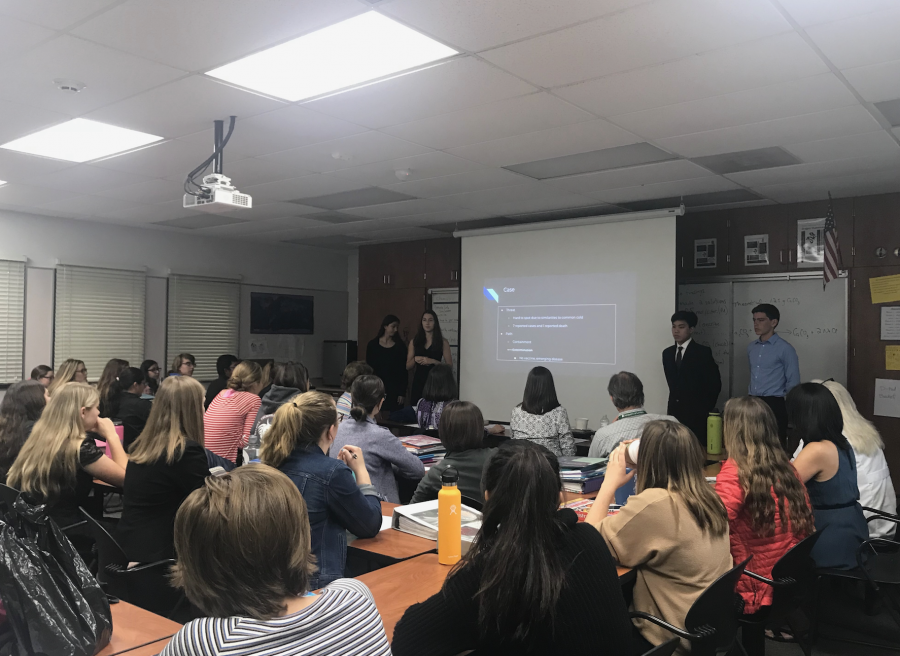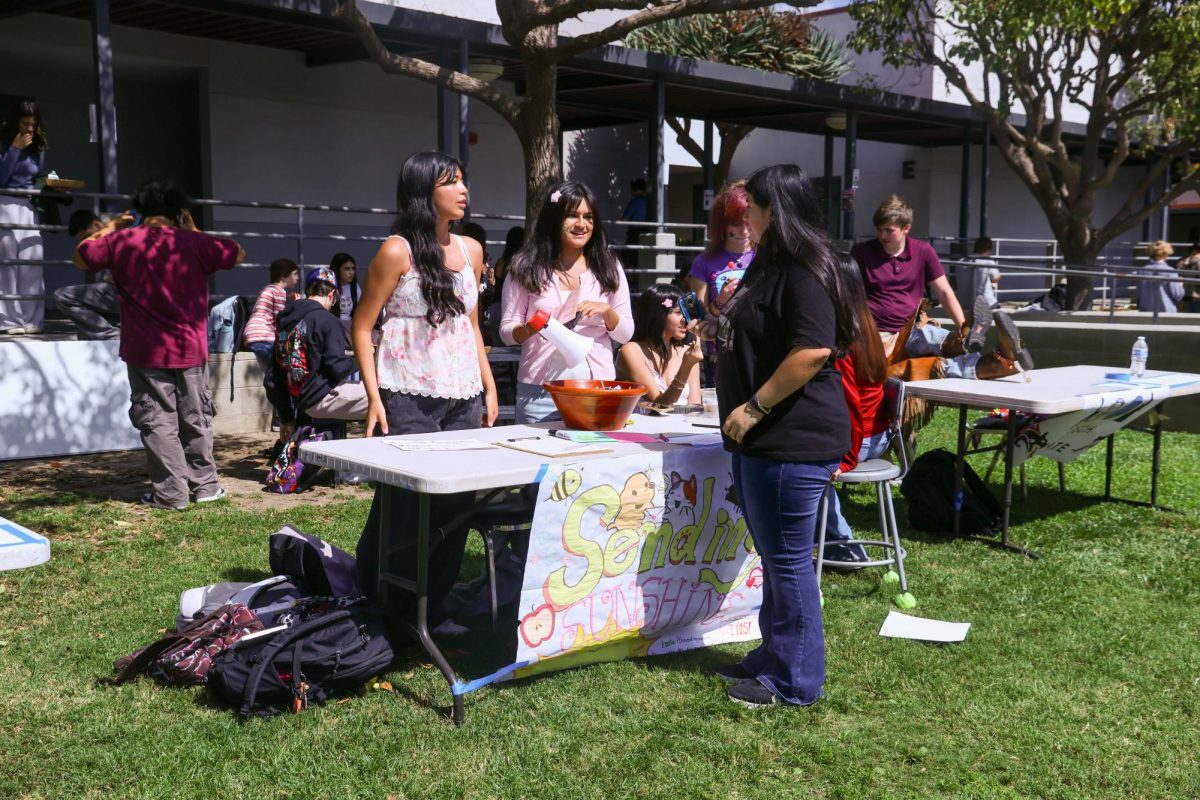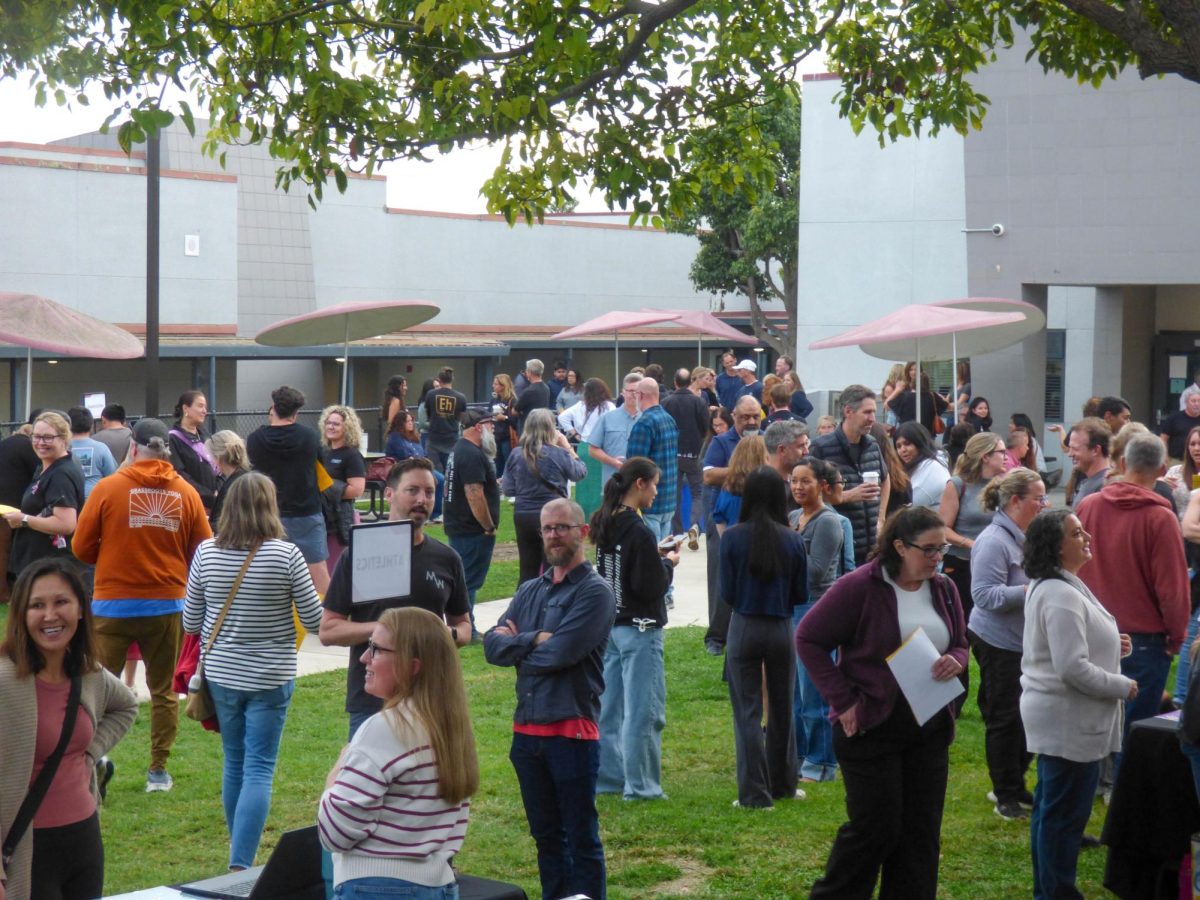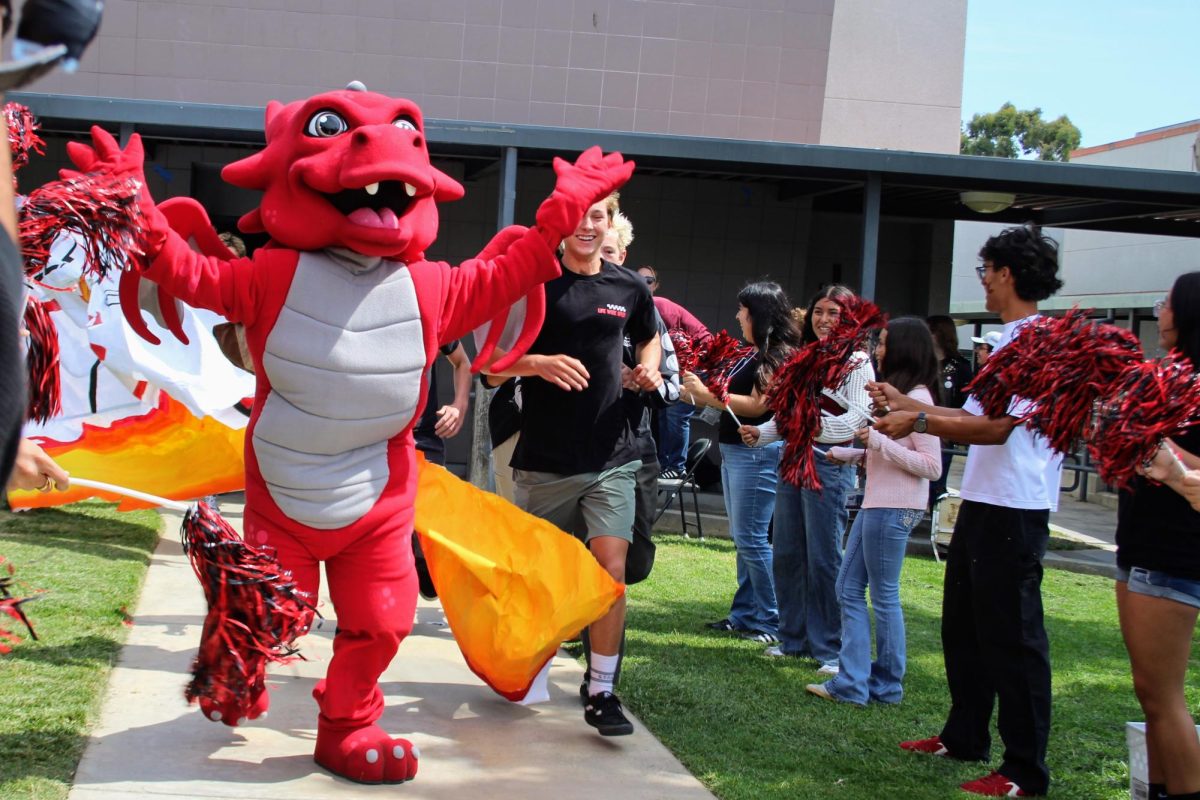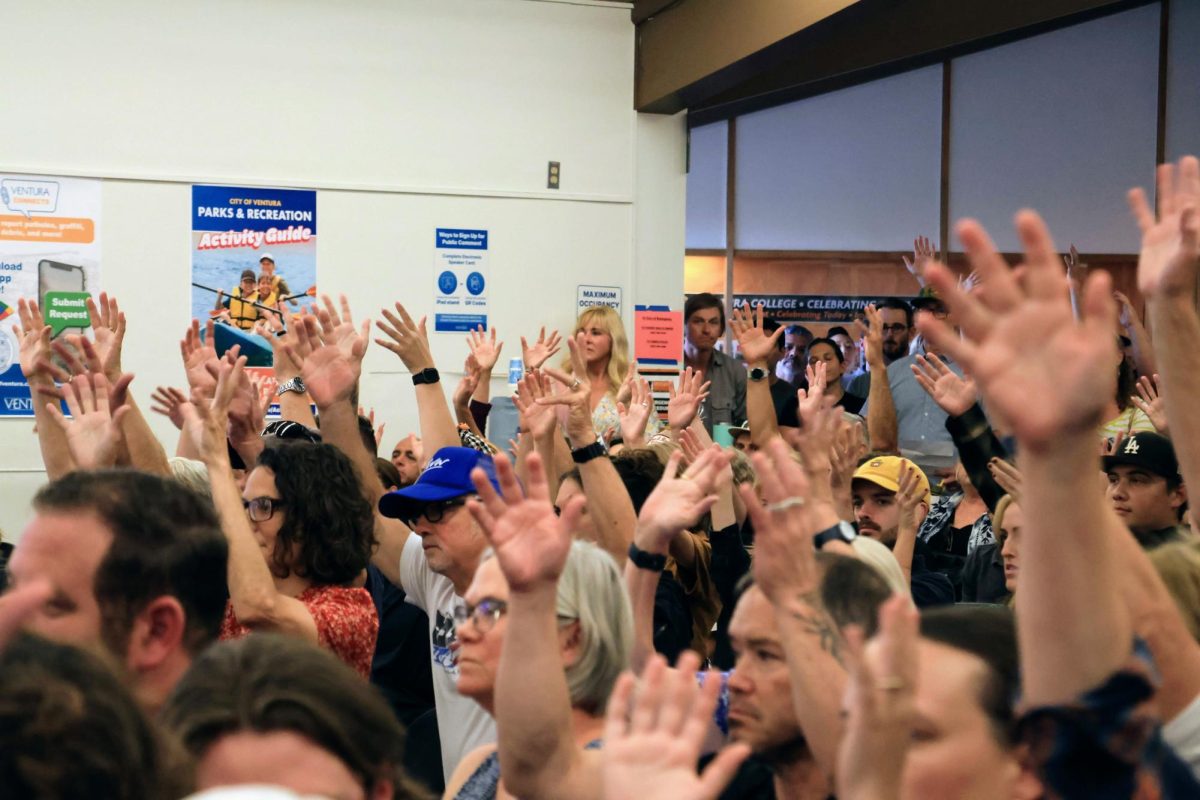The annual Disease Project is a 12-week endeavor where BioScience juniors are prompted to research the effects of and propose a method of treating a theoretical disease outbreak scenario. The event is prepared by BioScience Coordinator and Medical Technology teacher Mika Anderson and each group are selected at random by student groups given assigned to them. The goal of the assignment is to create a presentation that assesses the best course of action to handle the disease outbreak—to contain, eradicate or let the disease run its course.
On April 26 and 28, students gave their presentations in front of up to six professionals, including two microbiologists and a public health official.
To congratulate students on their hard work, Anderson commenced with an inspirational speech and then the long-awaited presentations began. First, a total of 8 groups had presented their projects and then the panel posed any questions they had.
This panel assessed how well the group knew about the disease and how well they presented, and the class ranked the four groups going each day. The team with the most class votes moves on to another presentation called Master the Disaster where students have the opportunity to present to around 800 listeners.
Many felt that the disease project, although arduous, was a very valuable experience in synthesizing research and presenting to an esteemed panel.
“The disease project is a chance to get to apply our physio and MedTech knowledge that we learned to a specific scenario and also to do lots of research to see how well we can apply that,” said Darren Wu ‘19.
In previous years, only one group moves on to the Master the Disaster symposium, but this year, three groups exceeded the expectations of the panel, so coordinator Dan Wall decided to involve three groups.
The classroom voted for who they thought was best and this group would continue to present at Master the Disaster. Rachel Chang, Sowon Lee, Marina Peacock and Jamie Dietz ’19, who presented on a fungal disease called Candida Auris, got first place with 16 class votes. They will be presenting at the Master the Disaster.
There were also two groups the classroom voted for second place. The first group was Darren Wu, Raine Hagerty, Abby Bova and Emiline Bova ’19, who covered the EV68 virus. The second group researched a theoretical bioterrorist threat of pneumonic plague. This group consisted of Anna Lapteva, Abbey Bufford, Sydney Roman and Ashley Rogers ’19.
Initially, EV68 was selected by a second class vote to proceed to the convention, but Wall decided to invite all three groups who will compete amongst each other for the first place prize of $350, second place prize of $150 and third place prize with no reward.
Darren Wu said that he felt his group did “very well in the end.” For a group that was “very far behind the other groups,” he is proud of how far they have come.
In the end, students learned a lot of useful information that they believe will help them pursue a variety of careers, set them apart and allow them to truly excel.
“The project was educational both practically and in what we learned,” Wu said.


